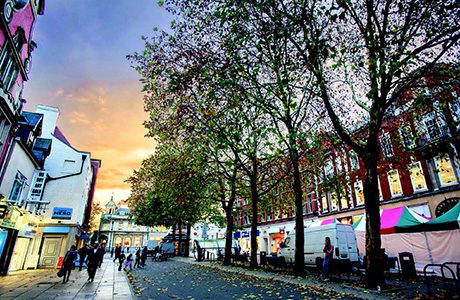
An aerial map of trees is help- ing to understand the damage caused to underground drains and sewers by tree roots, accord- ing to UK-based aerial survey specialist Bluesky. The firm’s National Tree Map details the location, height and canopy cover of more than 280 million trees, and is being used by scientists at Cranfield University to analyse how the proximity of trees can impact on the sewer infrastructure. Working with long term data from Anglian Water, they considered the loca- tion of infrastructure assets such as pipes and manhole covers and their proximity to trees and com- pared this spatial information with records of maintenance jobs.
By using the National Tree Map data for the whole of East Anglia, scientists were apparently able to show the likely zones of root intru- sion, and the impact these trees had on the number/frequency of sewer blockages and other consequences. Interestingly, the study revealed that bigger trees had less impact than medium sized trees, and that foul sewer systems were most prone to intrusion.
“Tree roots are only one of many environmental factors which can lead to infrastructure failure.” says Dr Timothy Farewell, Senior Research Fellow at the Cranfield Soil and Agrifood Institute. “However, tree roots are very good at exploiting weaknesses in sewer joints. Root intrusion into sewers can cause significant problems including blockages and signifi- cant serviceability issues. Trees can also impact on other under- ground assets by exacerbating soil related ground movement through fluctuations in soil water content.”
Post graduate researcher Jan Vodicka, who worked on the Cranfield study, aimed to identify the effect of tree proximity and tree height on sewer pipe dete- rioration.
The study concluded sewers located near trees are 1.4 times more likely to be intruded com- pared to sewers with no proxi- mate trees present, and are 1.8 times more likely where there are three or more trees. The incidence of blockage events in areas with more than 200 trees per kilome- tre of sewer is around 30 percent higher than in areas with less than 150 trees.
The number of sewer blockages in areas with a prevailing propor- tion of trees with heights from three to seven metres is almost 40 per cent higher than in areas with larger trees (more than 12 metres in height). The research also found foul sewer systems and the pipes with the smallest diameter are most prone to tree intrusion.







